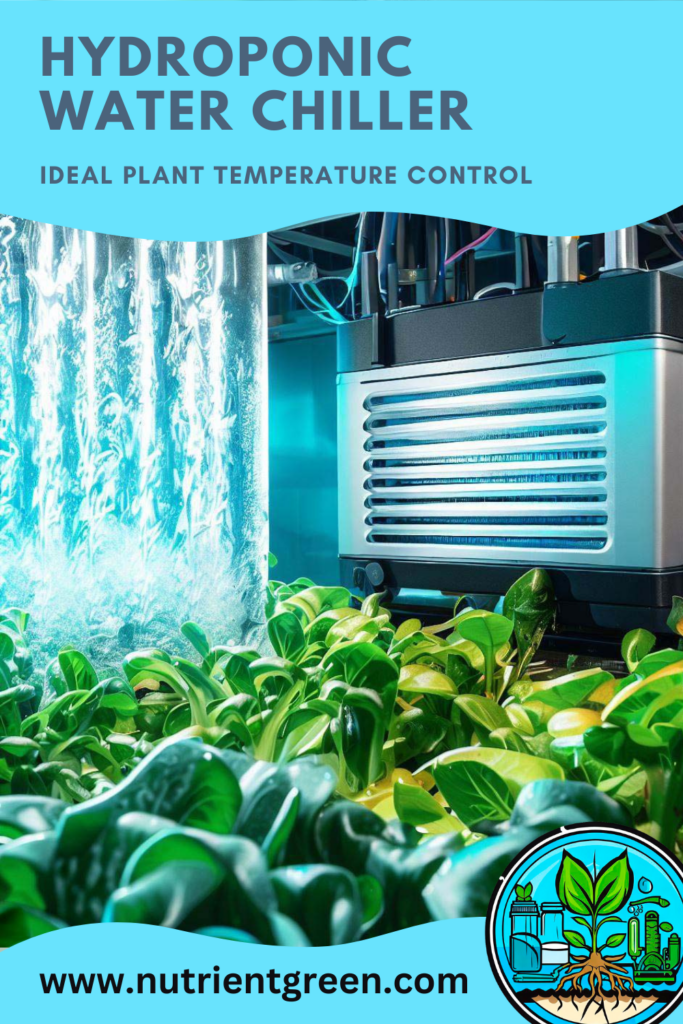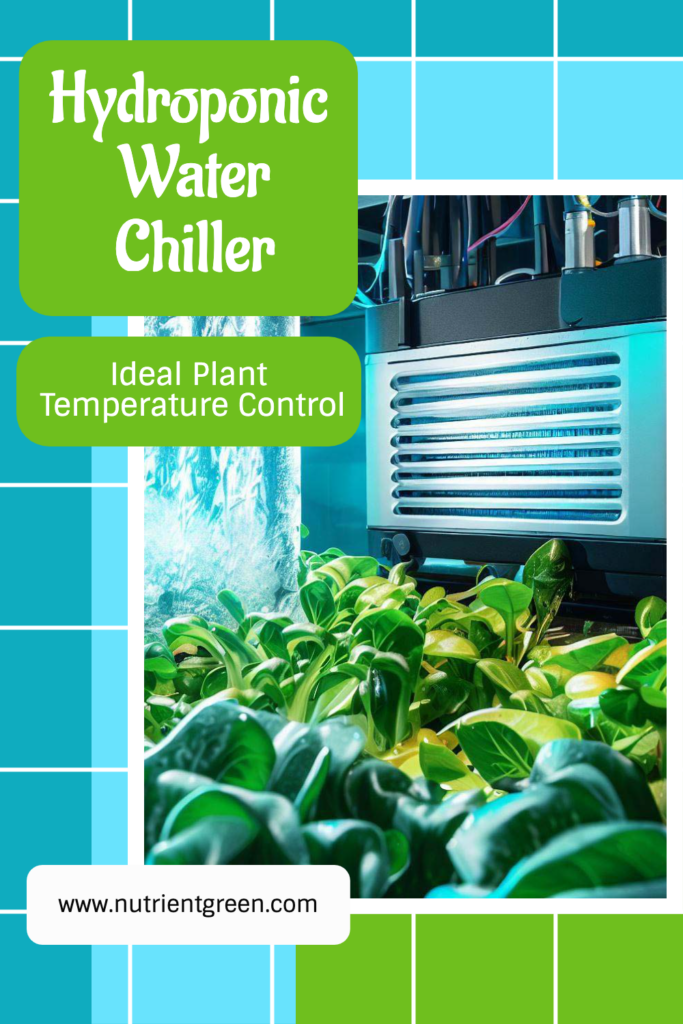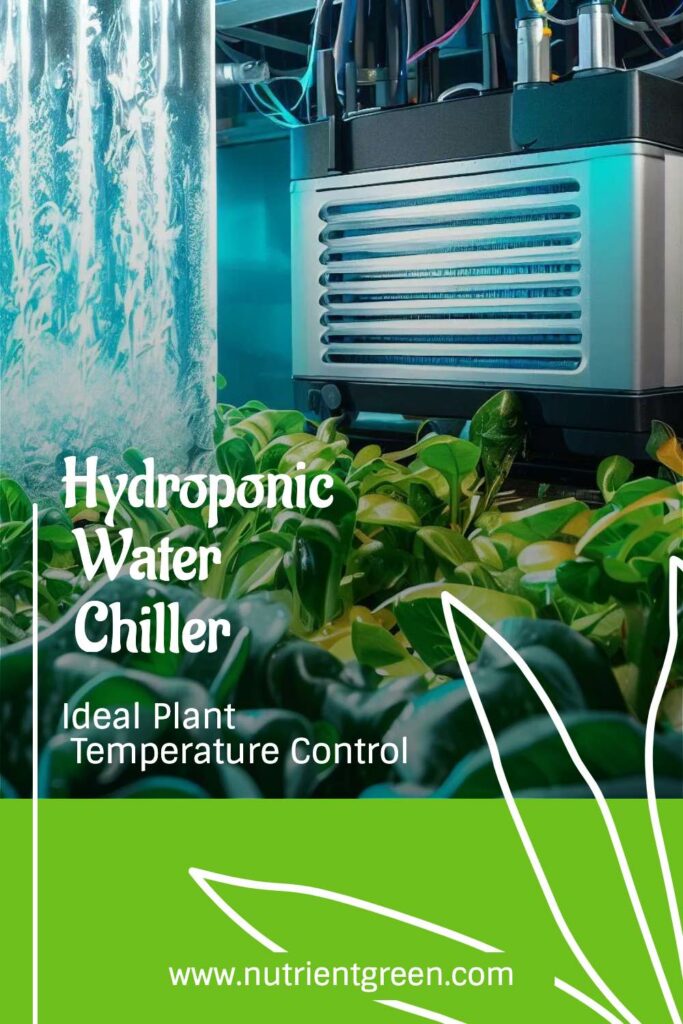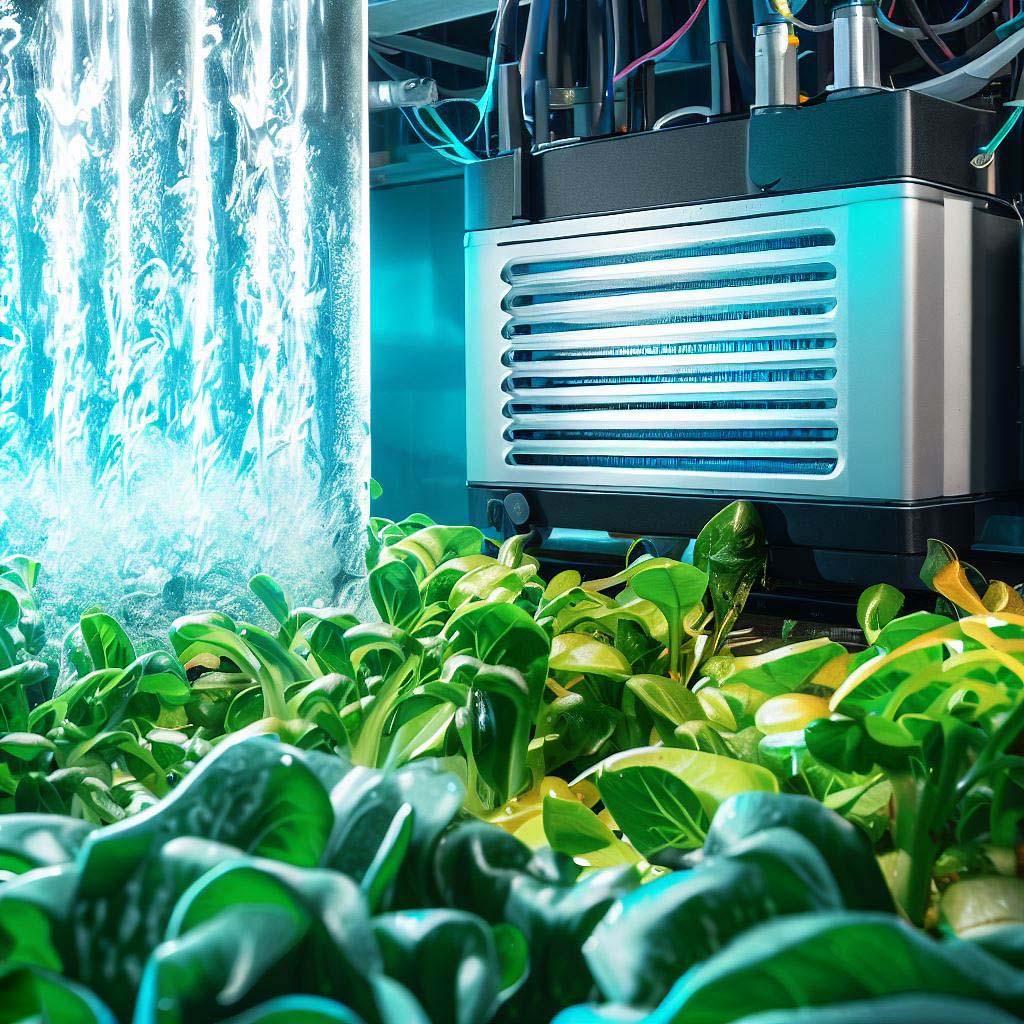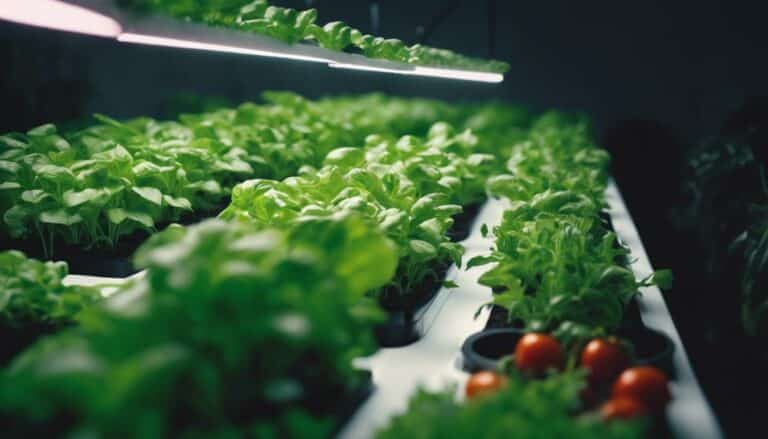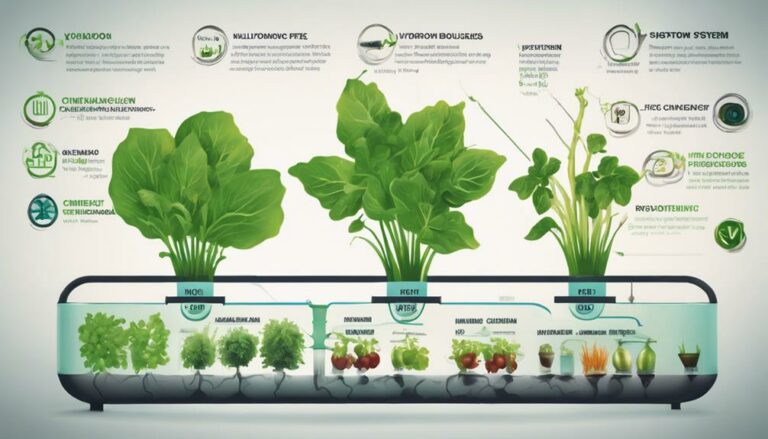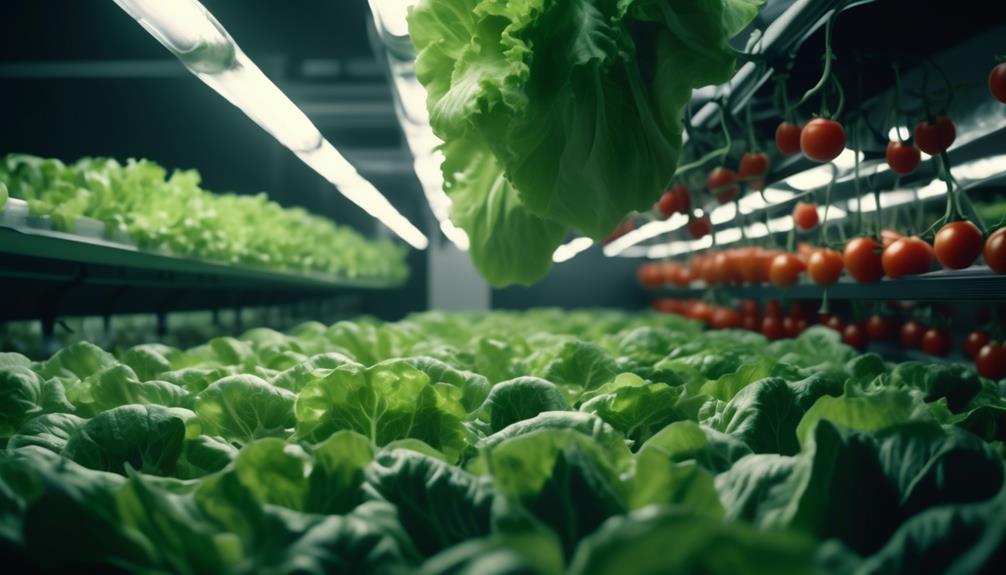If you are into hydroponics, you know how important it is to provide your plants with the optimal conditions for their growth and development. Hydroponics is a method of growing plants without soil, using a nutrient-rich water solution instead. This way, you can save space, water, and resources, while enjoying higher yields and quality.
Table of Contents
Introduction
However, hydroponics also comes with some challenges, such as maintaining the right water temperature for your plants. Water temperature affects many aspects of your hydroponic system, such as nutrient availability, oxygen levels, root health, and plant metabolism. If the water temperature is too high or too low, your plants will suffer from stress, disease, or even death.
That’s why you need a hydroponic water chiller. A hydroponic water chiller is a device that cools down the water in your hydroponic system to keep it within the ideal range for your plants. It works by circulating the water through a refrigeration unit that lowers its temperature and then returns it to the reservoir or the growing medium.
One of the factors that affects the water temperature in your hydroponic system is the ambient temperature. Depending on where you live and what season it is, the ambient temperature can be higher or lower than the optimal water temperature for your plants. This can cause your water temperature to fluctuate or deviate from the ideal range. To prevent this, you should use a hydroponic water chiller that can adjust the water temperature according to the ambient temperature. However, you should also be aware that different types of plants may have different responses to water temperature. For example, a recent study by Hendrickson et al. (2022) found that different types of basil had different growth characteristics when exposed to elevated water temperature using nutrient film technique (NFT), a type of hydroponic system. They found that some types of basil were more tolerant and resilient to high water temperature than others. Therefore, you should always check the specific requirements and preferences of your plants before setting the water temperature in your hydroponic system.
In this article, we will explain why you need a hydroponic water chiller, how to choose the best one for your system, some of the best models on the market, and how to install and maintain them. By the end of this article, you will have a better understanding of how a hydroponic water chiller can improve your hydroponic gardening experience.
Hydroponic Water Chiller: What It Is and Why You Need One
Hydroponics is a great way to grow plants indoors or outdoors, without relying on soil. It allows you to control the environment and the nutrients that your plants receive, resulting in faster growth, higher yields, and better quality.
However, hydroponics also requires more attention and care than traditional gardening. One of the most important factors that you need to monitor and regulate is the water temperature in your hydroponic system.
Water temperature affects many aspects of your hydroponic system, such as:
- Nutrient availability: Different nutrients have different solubility rates at different temperatures. If the water temperature is too high or too low, some nutrients may become unavailable or toxic to your plants.
- Oxygen levels: Water can hold more dissolved oxygen at lower temperatures than at higher temperatures. Oxygen is essential for your plant roots to breathe and absorb nutrients. If the water temperature is too high, the oxygen levels will drop and your plants will suffocate.
- Root health: Your plant roots are very sensitive to temperature changes. If the water temperature is too high or too low, your roots will become stressed and damaged. This can lead to root rot, algae growth, fungal infections, or bacterial diseases.
- Plant metabolism: Your plant metabolism is also influenced by the water temperature. If the water temperature is too high or too low, your plants will either grow too fast or too slow, affecting their quality and yield.
The ideal water temperature for most hydroponic plants is between 65°F and 75°F. However, this may vary depending on the type of plants, the stage of growth, and the ambient temperature. You should always check the specific requirements of your plants before setting the water temperature.
To maintain the optimal water temperature for your plants, you need a hydroponic water chiller. A hydroponic water chiller is a device that cools down the water in your hydroponic system to keep it within the ideal range for your plants. It works by circulating the water through a refrigeration unit that lowers its temperature and then returns it to the reservoir or the growing medium.
Benefits of Using a Hydroponic Water Chiller
- Prevents root rot and algae growth: Root rot and algae growth are common problems in hydroponic systems, especially when the water temperature is too high. Root rot is caused by anaerobic bacteria that thrive in low-oxygen conditions and attack the roots of your plants. Algae growth is caused by excessive light and nutrients in the water, creating a green slime that covers the surface of your reservoir or growing medium. Both root rot and algae growth can reduce the oxygen levels, nutrient uptake, and root health of your plants, leading to poor growth and yield. A hydroponic water chiller can prevent these problems by keeping the water temperature low and stable, inhibiting the growth of bacteria and algae.
- Improves nutrient uptake and oxygen levels: As mentioned earlier, water temperature affects the availability and solubility of nutrients in your hydroponic system. If the water temperature is too high or too low, some nutrients may become unavailable or toxic to your plants, causing nutrient deficiencies or imbalances. A hydroponic water chiller can improve nutrient uptake by keeping the water temperature within the optimal range for your plants, ensuring that they receive all the nutrients they need. Moreover, a hydroponic water chiller can also improve oxygen levels by keeping the water temperature low, allowing more dissolved oxygen to be present in the water. Oxygen is essential for your plant roots to breathe and absorb nutrients, so a higher oxygen level means healthier and happier plants.
- Enhances plant growth and yield: By preventing root rot and algae growth, improving nutrient uptake and oxygen levels, and maintaining a stable water temperature, a hydroponic water chiller can enhance plant growth and yield. Your plants will be able to grow faster, stronger, and bigger, producing more flowers, fruits, or vegetables. A hydroponic water chiller can also help you extend your growing season, as you can grow plants that are sensitive to high temperatures even in hot weather.
- Reduces stress and disease: Water temperature fluctuations can cause stress and shock to your plants, affecting their health and performance. Stress can make your plants more susceptible to pests, diseases, or environmental factors, such as heat or cold. A hydroponic water chiller can reduce stress and disease by keeping the water temperature consistent and comfortable for your plants, allowing them to grow without any interruptions or disturbances.
How to Choose the Best Hydroponic Water Chiller for Your System
As you can see, a hydroponic water chiller can provide many benefits for your hydroponic system. However, not all hydroponic water chillers are created equal. There are many factors that you need to consider when choosing the best hydroponic water chiller for your system, such as:
Size and capacity
The size and capacity of a hydroponic water chiller determine how much water it can cool down and how fast it can do it. The size and capacity of a hydroponic water chiller depend on its power rating (measured in horsepower or HP) and its cooling capacity (measured in British Thermal Units or BTU). The power rating indicates how much electricity a hydroponic water chiller consumes, while the cooling capacity indicates how much heat a hydroponic water chiller can remove from the water. The higher the power rating and cooling capacity, the larger and more powerful a hydroponic water chiller is.
To choose the right size and capacity for your hydroponic system, you need to know two things: the volume of water in your reservoir (measured in gallons) and the desired temperature drop (measured in degrees Fahrenheit). The volume of water in your reservoir depends on the size of your reservoir and how much water you fill it with. The desired temperature drop depends on the ambient temperature and the optimal temperature for your plants.
Once you know these two numbers, you can use this formula to calculate the cooling capacity you need:
Cooling capacity (BTU) = Volume of water (gallons) x 8.34 x Desired temperature drop (degrees Fahrenheit)
For example, if you have a 50-gallon reservoir and you want to lower the water temperature from 80°F to 70°F, you need a cooling capacity of:
Cooling capacity (BTU) = 50 x 8.34 x 10 = 4170
This means you need a hydroponic water chiller that can provide at least 4170 BTU of cooling capacity. However, you should also consider some factors that may increase the cooling demand, such as:
- The heat generated by your grow lights, pumps, or other equipment
- The heat transferred from the surrounding air or sunlight
- The heat loss from the water pipes or hoses
To account for these factors, you should add a safety margin of 20% to 30% to your cooling capacity calculation. This will ensure that your hydroponic water chiller can handle any unexpected heat spikes or fluctuations.
For example, if you add a 20% safety margin to your cooling capacity of 4170 BTU, you get:
Cooling capacity (BTU) with safety margin = 4170 x 1.2 = 5004
This means you need a hydroponic water chiller that can provide at least 5004 BTU of cooling capacity.
The size and capacity of a hydroponic water chiller also affect its price and energy consumption. Generally, the larger and more powerful a hydroponic water chiller is, the more expensive and energy-hungry it is. Therefore, you should choose a hydroponic water chiller that matches your system’s needs without being too oversized or undersized.
Type and design
The type and design of a hydroponic water chiller refer to how it cools down the water and how it fits into your hydroponic system. There are two main types of hydroponic water chillers: refrigeration chillers and thermoelectric chillers.
Refrigeration chillers are the most common and popular type of hydroponic water chillers. They work by using a compressor, a condenser, an evaporator, and a refrigerant to transfer heat from the water to the air. They are very effective and efficient at cooling large volumes of water quickly and consistently. However, they are also bulky, noisy, and expensive to buy and operate.
Thermoelectric chillers are a newer and more innovative type of hydroponic water chillers. They work by using a Peltier device, which is a solid-state device that converts electricity into a temperature difference. They are very compact, quiet, and easy to install and maintain. However, they are also less powerful and less efficient than refrigeration chillers. They are more suitable for cooling small volumes of water slowly and intermittently.
The design of a hydroponic water chiller also affects how it fits into your hydroponic system. There are two main designs of hydroponic water chillers: inline chillers and drop-in chillers.
Inline chillers are designed to be connected to the water pipes or hoses of your hydroponic system. They circulate the water through their cooling unit and then return it to the reservoir or the growing medium. They are more discreet and space-saving than drop-in chillers. However, they also require more plumbing and wiring work to install and operate.
Drop-in chillers are designed to be submerged in the reservoir or the growing medium of your hydroponic system. They cool down the water directly by contact with their cooling unit. They are more convenient and easy to use than inline chillers. However, they also take up more space and may interfere with the aesthetics or functionality of your hydroponic system.
To choose the right type and design for your hydroponic system, you need to consider your preferences, budget, space availability, and system configuration.
Energy efficiency and noise level
The energy efficiency and noise level of a hydroponic water chiller affect its performance and impact on your environment. The energy efficiency of a hydroponic water chiller indicates how much electricity it consumes to cool down a certain amount of water. The noise level of a hydroponic water chiller indicates how loud it operates when running.
The energy efficiency and noise level of a hydroponic water chiller depend on its type, design, quality, and settings. Generally, refrigeration chillers are more energy-efficient but also louder than thermoelectric chillers. Inline chillers are more energy-efficient but also louder than drop-in chillers. Higher-quality chillers are more energy-efficient and quieter than lower-quality chillers. Higher settings (such as lower temperature or higher flow rate) result in lower energy efficiency and higher noise level than lower settings.
To choose the right energy efficiency and noise level for your hydroponic system, you need to consider your electricity bill, environmental impact, and comfort level. You should look for a hydroponic water chiller that has a high energy efficiency rating (such as Energy Star) and a low noise level rating (such as decibels or dB). You should also adjust the settings of your hydroponic water chiller to match your system’s needs without wasting energy or creating noise.
- Features and accessories: The features and accessories of a hydroponic water chiller affect its functionality and convenience. The features and accessories of a hydroponic water chiller may include:
- Temperature controller: A temperature controller is a device that allows you to set and monitor the water temperature in your hydroponic system. It can be either built-in or external to the hydroponic water chiller. A temperature controller can help you maintain the optimal water temperature for your plants, as well as prevent overheating or freezing of the water. Some temperature controllers also have alarms or indicators that alert you when the water temperature is out of range or when the hydroponic water chiller is malfunctioning.
- Water pump: A water pump is a device that moves the water from the reservoir or the growing medium to the hydroponic water chiller and back. It can be either built-in or external to the hydroponic water chiller. A water pump can help you circulate the water through your hydroponic system, ensuring even cooling and oxygenation of the water. Some water pumps also have filters or UV sterilizers that clean and sanitize the water, preventing contamination or infection of your plants.
- Water hose: A water hose is a flexible tube that connects the water pump to the hydroponic water chiller and back. It can be either included or excluded with the hydroponic water chiller. A water hose can help you transport the water through your hydroponic system, avoiding leaks or spills. Some water hoses also have clamps or connectors that secure them to the water pump and the hydroponic water chiller, preventing disconnection or detachment of the hose.
- Water thermometer: A water thermometer is a device that measures the water temperature in your hydroponic system. It can be either included or excluded with the hydroponic water chiller. A water thermometer can help you verify the accuracy and reliability of the temperature controller, as well as detect any temperature fluctuations or anomalies in your hydroponic system. Some water thermometers also have digital displays or wireless connections that show you the current and historical data of the water temperature, helping you track and analyze your hydroponic system’s performance.
To choose the right features and accessories for your hydroponic system, you need to consider your needs, expectations, and budget. You should look for a hydroponic water chiller that has the features and accessories that suit your hydroponic system’s size, type, design, and configuration. You should also compare the prices and quality of different hydroponic water chillers and their features and accessories, to find the best value for your money.
Now that you know how to choose the best hydroponic water chiller for your system, you may wonder what are some of the best hydroponic water chillers on the market. Here are some of the best hydroponic water chillers that we recommend, based on their features, performance, reviews, and ratings:
Some of the Best Hydroponic Water Chillers on the Market
Active Aqua Chiller
The Active Aqua Chiller is one of the most popular and trusted refrigeration chillers for hydroponic systems. It has a sleek and durable design, a powerful and efficient cooling unit, and a user-friendly and adjustable temperature controller. It comes in four sizes, ranging from 1/10 HP to 1 HP, with cooling capacities from 2500 BTU to 12000 BTU. It can cool down water volumes from 13 gallons to 317 gallons, with temperature drops from 10°F to 30°F.
The Active Aqua Chiller has many features and accessories that make it easy to use and maintain, such as:
- A microcomputer control system that allows you to set and monitor the water temperature with accuracy and precision
- A large LCD display that shows you the current and target water temperature, as well as any error codes or alarms
- A titanium heat exchanger that is corrosion-resistant and compatible with saltwater or freshwater
- A anti-freezing system that prevents the water from freezing inside the chiller
- A memory function that remembers your settings in case of a power outage
- A water level sensor that protects the chiller from running dry
- A water flow alarm that alerts you when the water flow is too low or too high
- A water hose with clamps and connectors that fits most standard water pumps and reservoirs
The Active Aqua Chiller has many pros and cons that you should consider before buying it, such as:
Pros
- It is very effective and efficient at cooling large volumes of water quickly and consistently
- It is very easy to set up and operate, with clear instructions and indicators
- It is very durable and reliable, with high-quality materials and components
- It is very versatile and compatible, with different sizes and capacities to suit different hydroponic systems
- It has a one-year warranty and excellent customer service
Cons
- It is very expensive to buy and operate, with high upfront and electricity costs
- It is very noisy to run, with a loud compressor and fan
- It is very bulky and heavy to move or store, with a large footprint and weight
The Active Aqua Chiller has a price range from $300 to $1000, depending on the size and capacity. It has a rating of 4.5 out of 5 stars on Amazon, based on over 300 customer reviews.
IceProbe Thermoelectric Chiller
The IceProbe Thermoelectric Chiller is one of the most innovative and compact thermoelectric chillers for hydroponic systems. It has a simple and elegant design, a quiet and energy-saving cooling unit, and a plug-and-play installation process. It comes in one size only, with a cooling capacity of 50 BTU. It can cool down water volumes up to 10 gallons, with a temperature drop of up to 8°F.
The IceProbe Thermoelectric Chiller has few features and accessories that make it convenient and easy to use, such as:
- A Peltier device that converts electricity into a temperature difference between two metal plates
- A heat sink that dissipates the heat from the hot plate into the air
- A fan that cools down the heat sink and increases its efficiency
- A probe that submerges into the water reservoir or growing medium and cools down the water by contact with the cold plate
- A power cord that connects the chiller to an electrical outlet
The IceProbe Thermoelectric Chiller has some pros and cons that you should consider before buying it, such as:
Pros
- It is very quiet and energy-efficient to run, with no moving parts or refrigerant
- It is very easy to install and use, with no plumbing or wiring required
- It is very compact and lightweight to move or store, with a small footprint and weight
- It is very affordable to buy, with a low upfront cost
Cons
- It is very weak and slow at cooling small volumes of water intermittently and inconsistently
- It is very limited and incompatible, with one size and capacity only to suit small hydroponic systems
- It is very fragile and prone to failure, with low-quality materials and components
- It has no warranty or customer service
The IceProbe Thermoelectric Chiller has a price of $130. It has a rating of 3.9 out of 5 stars on Amazon, based on over 100 customer reviews.
EcoPlus Chiller
The EcoPlus Chiller is another popular and reliable refrigeration chiller for hydroponic systems. It has a sturdy and sleek design, a powerful and efficient cooling unit, and a user-friendly and adjustable temperature controller. It comes in three sizes, ranging from 1/10 HP to 1/2 HP, with cooling capacities from 2640 BTU to 7920 BTU. It can cool down water volumes from 13 gallons to 132 gallons, with temperature drops from 10°F to 30°F.
The EcoPlus Chiller has many features and accessories that make it easy to use and maintain, such as:
- A microcomputer control system that allows you to set and monitor the water temperature with accuracy and precision
- A LED display that shows you the current and target water temperature, as well as any error codes or alarms
- A titanium heat exchanger that is corrosion-resistant and compatible with saltwater or freshwater
- A anti-freezing system that prevents the water from freezing inside the chiller
- A memory function that remembers your settings in case of a power outage
- A water level sensor that protects the chiller from running dry
- A water flow alarm that alerts you when the water flow is too low or too high
- A water hose with clamps and connectors that fits most standard water pumps and reservoirs
The EcoPlus Chiller has many pros and cons that you should consider before buying it, such as:
Pros
- It is very effective and efficient at cooling large volumes of water quickly and consistently
- It is very easy to set up and operate, with clear instructions and indicators
- It is very durable and reliable, with high-quality materials and components
- It is very versatile and compatible, with different sizes and capacities to suit different hydroponic systems
- It has a one-year warranty and excellent customer service
Cons
- It is very expensive to buy and operate, with high upfront and electricity costs
- It is very noisy to run, with a loud compressor and fan
- It is very bulky and heavy to move or store, with a large footprint and weight
The EcoPlus Chiller has a price range from $400 to $800, depending on the size and capacity. It has a rating of 4.4 out of 5 stars on Amazon, based on over 200 customer reviews.
Now that you know some of the best hydroponic water chillers on the market, you may wonder how to install and maintain them. Here are some tips and tricks on how to install and maintain your hydroponic water chiller:
How to Install and Maintain a Hydroponic Water Chiller
Installing and maintaining a hydroponic water chiller is not very difficult, but it does require some time, effort, and care. Here are some steps that you should follow when installing and maintaining your hydroponic water chiller:
Installation steps
- Choose a suitable location for your hydroponic water chiller. The location should be close to your hydroponic system, away from direct sunlight or heat sources, well-ventilated, levelled, stable, dry, clean, and accessible.
- Unpack your hydroponic water chiller carefully. Check if all the parts are included and in good condition. Read the manual carefully for any specific instructions or precautions.
- Connect your hydroponic water chiller to your hydroponic system. Depending on the type and design of your hydroponic water chiller, you may need to connect it to the water pump, the reservoir, or the growing medium. Use the water hose provided or compatible with your hydroponic water chiller. Secure the hose with clamps or connectors to prevent leaks or spills.
- Plug your hydroponic water chiller into an electrical outlet. Make sure the outlet is grounded, protected by a circuit breaker or a surge protector, and compatible with your hydroponic water chiller’s voltage and frequency.
- Turn on your hydroponic water chiller. Set the desired water temperature using the temperature controller. Monitor the current water temperature using the display or the thermometer. Wait for the hydroponic water chiller to reach the target temperature.
Maintenance tips
- Clean your hydroponic water chiller regularly. Dust off the exterior of your hydroponic water chiller with a soft cloth or a brush. Wipe off any spills or stains with a damp cloth or a mild detergent. Rinse off any residue or debris from the water hose, the heat exchanger, and the probe with clean water. Dry off all the parts with a soft cloth or a towel.
- Check your hydroponic water chiller regularly. Check if all the parts are working properly and in good condition. Check if there are any leaks, cracks, or damages on the water hose, the heat exchanger, or the probe. Check if there are any error codes or alarms on the display or the temperature controller. Check if the water temperature is within the optimal range for your plants.
- Replace your hydroponic water chiller regularly. Replace any parts that are worn out, broken, or malfunctioning with original or compatible parts. Replace the water hose, the heat exchanger, or the probe every 6 to 12 months, depending on the usage and quality. Replace the hydroponic water chiller itself every 3 to 5 years, depending on the performance and warranty.
Troubleshooting Common Issues
Despite proper maintenance, occasional issues may arise with your hydroponic water chiller. Here are some common problems and possible solutions:
- Insufficient Cooling: If the chiller fails to cool the water adequately, check for clogged filters or low refrigerant levels. Clean or replace filters as needed and consult a professional for refrigerant recharge if required.
- Excessive Noise or Vibrations: Noisy or vibrating chillers may indicate loose components or improper installation. Ensure all connections are secure and contact the manufacturer or a professional if the issue persists.
- Water Leaks: Leaks can occur due to loose fittings or damaged seals. Tighten any loose connections and replace faulty seals promptly. If the issue persists, seek professional assistance.
- Inconsistent Temperature: If the chiller fails to maintain a consistent temperature, verify that the temperature settings are correct and that the chiller is not overburdened by excessive heat load. Consider upgrading to a more suitable chiller if necessary.
Tips for Maximizing Efficiency
To maximize the efficiency of your hydroponic water chiller and optimize your growing experience, consider the following tips:
- Insulate Water Lines: Insulate the water lines connecting the chiller to the hydroponic system to minimize heat exchange with the surroundings. This reduces energy wastage and improves cooling efficiency.
- Optimize Chiller Operation: Program the chiller to operate during periods of peak temperature, such as the hottest hours of the day. This ensures energy is used efficiently and provides consistent cooling when needed the most.
- Monitor Temperature and Humidity: Regularly monitor the temperature and humidity levels within your hydroponic system. Adjust the chiller settings as needed to maintain optimal conditions for your specific plant varieties.
- Maintain Air Circulation: Ensure proper air circulation around the chiller unit by keeping it free from obstructions. Good airflow helps dissipate heat efficiently and prevents the chiller from overworking.
Conclusion
A hydroponic water chiller is a device that cools down the water in your hydroponic system to keep it within the ideal range for your plants. It can provide many benefits for your hydroponic system, such as preventing root rot and algae growth, improving nutrient uptake and oxygen levels, enhancing plant growth and yield, and reducing stress and disease.
To choose the best hydroponic water chiller for your system, you need to consider several factors, such as size and capacity, type and design, energy efficiency and noise level, and features and accessories. You also need to compare different models and brands of hydroponic water chillers based on their features, performance, reviews, and ratings.
Some of the best hydroponic water chillers on the market are:
- Active Aqua Chiller: A refrigeration chiller that is effective, efficient, durable, reliable, versatile, and compatible
- IceProbe Thermoelectric Chiller: A thermoelectric chiller that is quiet, energy-saving, compact, lightweight, affordable
- EcoPlus Chiller: A refrigeration chiller that is effective, efficient, durable, reliable, versatile, and compatible
To install and maintain your hydroponic water chiller, you need to follow some steps and tips, such as choosing a suitable location, connecting it to your hydroponic system, plugging it into an electrical outlet, setting the desired water temperature, cleaning it regularly, checking it regularly, and replacing it regularly.
Thank you for reading this article. We hope you have enjoyed it and learned something new. If you have any questions or comments about this article or hydroponic water chillers in general, please feel free to leave them below. We would love to hear from you and help you with your hydroponic gardening journey.
Happy chilling!
FAQs
How do I know if I need a hydroponic water chiller?
You may need a hydroponic water chiller if:
You live in a hot climate or have high ambient temperatures
You use high-intensity grow lights or other heat-generating equipment
You grow plants that are sensitive to high temperatures or have specific temperature requirements
You notice signs of root rot or algae growth in your hydroponic system
You notice signs of nutrient deficiencies or imbalances in your plants
You notice signs of stress or disease in your plants
You want to improve your plant growth and yield
How do I know what size and capacity of hydroponic water chiller I need?
You can use this formula to calculate the cooling capacity you need:
Cooling capacity (BTU) = Volume of water (gallons) x 8.34 x Desired temperature drop (degrees Fahrenheit)
Then add a safety margin of 20% to 30% to account for any heat spikes or fluctuations.
How do I know what type and design of hydroponic water chiller I need?
You can choose between refrigeration chillers and thermoelectric chillers, depending on your preferences, budget, space availability, and system configuration. You can also choose between inline chillers and drop-in chillers, depending on your convenience, aesthetics, and functionality.
How do I know what energy efficiency and noise level of hydroponic water chiller I need?
You can look for a hydroponic water chiller that has a high energy efficiency rating (such as Energy Star) and a low noise level rating (such as decibels or dB). You can also adjust the settings of your hydroponic water chiller to match your system’s needs without wasting energy or creating noise.
How do I know what features and accessories of hydroponic water chiller I need?
You can look for a hydroponic water chiller that has the features and accessories that suit your hydroponic system’s size, type, design, and configuration. You can also compare the prices and quality of different hydroponic water chillers and their features and accessories, to find the best value for your money.
